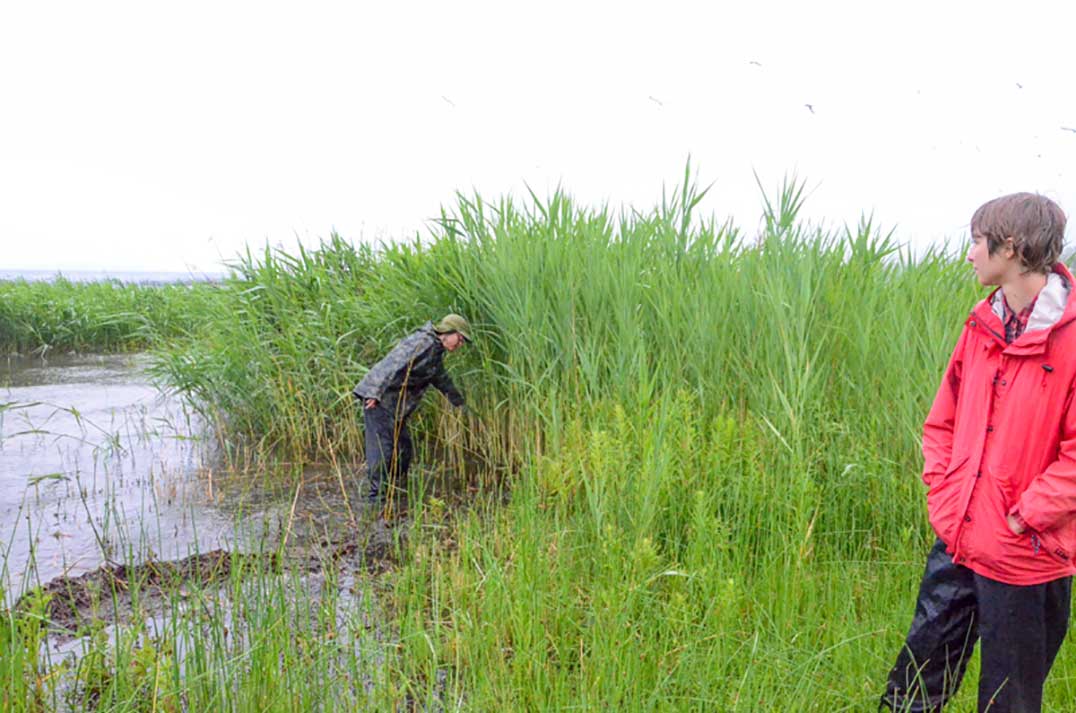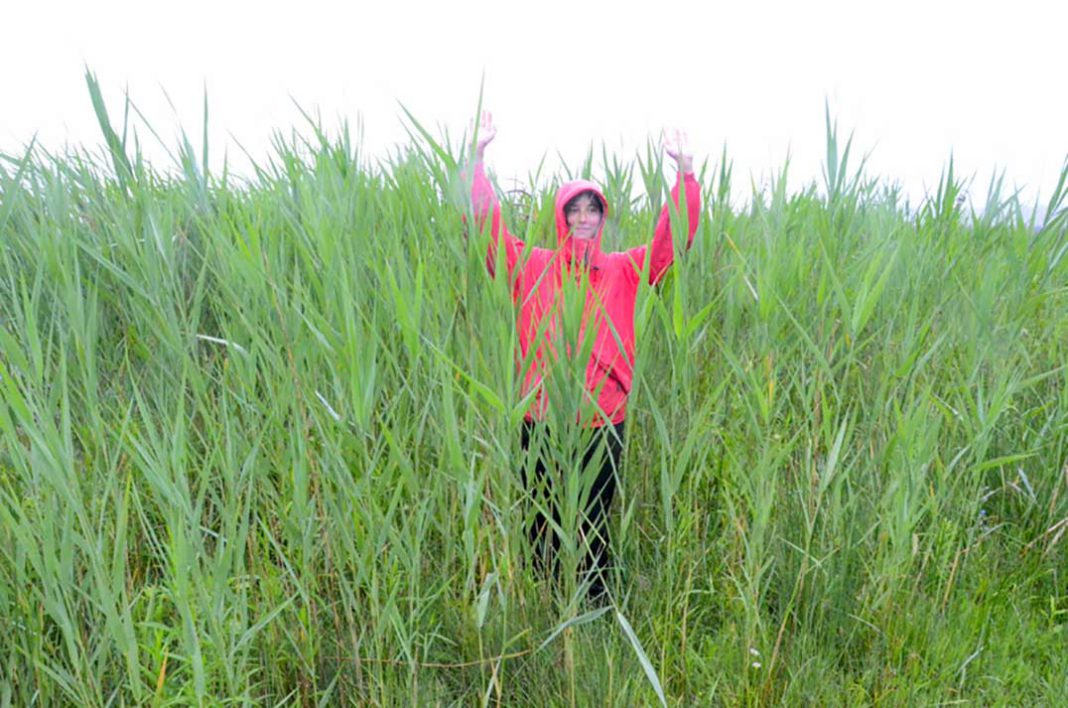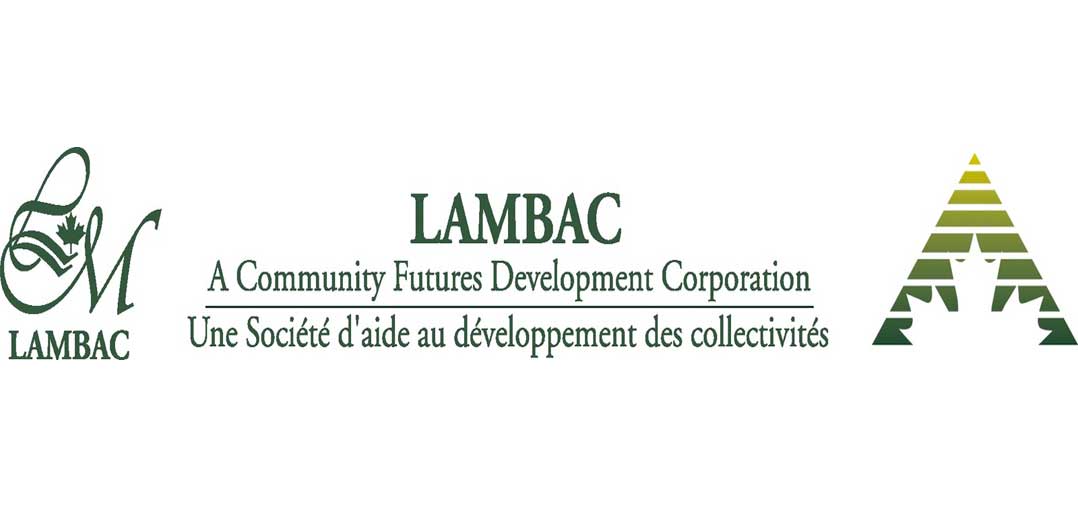MANITOULIN—There is a foreign invader trying to establish a beachhead on Manitoulin’s shores and local concerned citizens are rallying this Saturday as the start of Phrag Week to defend our shorelines.
“Bulrushes, cattails and tall reeds have always been present on Manitoulin’s shores,” said Phragmites Week Coordinator Manitoulin biologist Judith Jones. “However, there is a new foreign invader among the natural plants. Invasive phragmites is an exceptionally tall, robust grass that grows up to 15 feet high and form patches so dense they are impossible to climb through.”
Ms. Jones demonstrated the density of the phragmites patches during a recent tour of the shoreline adjacent to the Sheguiandah First Nation powwow grounds. “Turtles can’t crawl through them, ducks can’t nest in them, fish can’t use the areas for spawning and it can become impossible to get from the cottage to the lake.”

Coordinator Judith Jones cuts a stem of the tough invasive weed from a patch on the Sheguiandah First Nation beach. The stems grow so close and dense that turtles and other aquatic wildlife cannot make their way through the stands.
Ms. Jones said that she first noticed phragmites (pronounced frag-MITE-eez) on several Manitoulin beaches in 2011 and she began monitoring patch growth with GPS tracklogs. By 2013, she found that most patches had more than doubled in size. “In 2014, I was working down south and I saw what phragmites turns into,” she said. “Ditches were huge walls of phragmites and a place that had been a nice beach was a solid field of grass almost as tall as a house. I told myself ‘we can’t let this happen to Manitoulin Island’.”
Ms. Jones inaugurated The Manitoulin Phragmites Project in 2016 with a goal “to reduce, control or eliminate this invasive grass across Manitoulin, Cockburn and surrounding islands.” The Project aims to show people how to tackle phragmites on their own properties. “That way, if small patches get started, they can be dealt with before they become a bigger problem,” she said. “In order to get the message out and show people what to do, the project will be hosting Manitoulin Phragmites Week July 22-28 with events across Manitoulin Island.”
According to Ms. Jones, Manitoulin Phragmites Week will include a number of on-site demonstrations of the best ways to deal with phragmites and how to handle, haul and dispose of it.
It is very important that care be taken in dealing with patches of the invasive reed. While phragmites is not toxic, any pieces can sprout, so care must be taken not to lose bits or new patches may start up.
Ms. Jones cut a piece of reed from the patch to illustrate how tough the stem actually is. After looking at the stem, The Expositor dropped it to the ground. “No,” exclaimed Ms. Jones. “You can’t do that.” Patiently, she showed where on the dropped stem a new plant would spring up. Just like the mythical Hydra of Greek legend, from that one dropped stem a dozen new plants would soon spring up to replace the fallen (which itself would continue to grow unless snipped below the water’s surface).
After the Saturday, July 22 demonstrations there will also be work bees at most locations, and the public is invited to lend a hand. “Our team has clippers, two brush cutters, twine, bags, tarps, and a trailer, but sometimes we just need more people,” she said. If attending a work bee, participants are advised to bring waders or old running shoes and a hand clippers or sharp pocket knife.
For those not able to attend the outdoor events, there will be several indoor presentations and the dedicated team will also make house calls, by appointment, to assist with removing phragmites and locations with phragmites can be reported to the Manitoulin Phragmites Project on their Facebook page or by email to manitoulinphrag@yahoo.com.
The Project has secured three years of funding to pay for a four-person field team, as well as to bring in additional machinery to tackle some of the larger infestations, noted Ms. Jones. A floating cutting device called a Truxor will also be brought up from the Invasive Phragmites Control Centre in Guelph and used for control this year at Kaboni Beach and Michael’s Bay. “This is our first time working with this machine,” said Ms. Jones. “If it goes well, we hope to start using it next year at some of the worst sites (the mouth of Blue Jay Creek, the head of South Bay and possibly the shores of Lake Wolsey and Julia Bay).” Like any battle, the war chest plays a significant role and in this grass roots effort financial donations are particularly important, as Ms. Jones explains. The cost to bring the machine to Manitoulin is more than $5,000 per day.
The Manitoulin Phragmites Project is sponsored by Environment Canada’s Habitat Stewardship Program, Ontario’s Species at Risk Stewardship Fund and Nature Conservancy Canada. Other supporters include Manitoulin Streams, Municipality of Central Manitoulin, Wiikwemkoong Unceded Territory, the Escarpment Biosphere Conservancy and a host of local volunteers.




